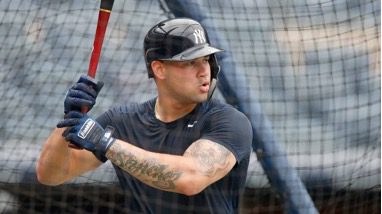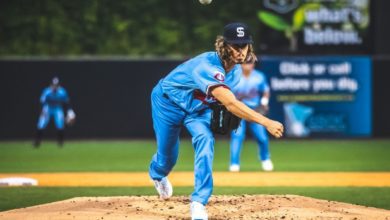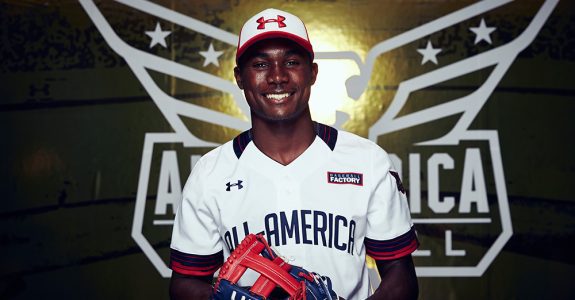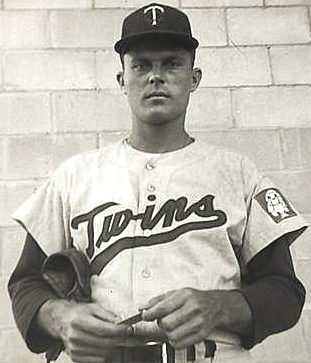
Twins slugger Justin Morneau
The Minnesota Twins are coming off back-to-back AL Central division championships. They are looking to become the first club to win the division title in three consecutive years since they pulled off the feat in the 2002-04 seasons. If they are able to do so, it would tie for the second-longest streak of Central division titles, trailing only the Cleveland Indians’ mark of five straight titles from 1995-1999.
But the task will not be an easy one. The organization bid adieu to its starting middle infield and four members of its bullpen, leaving the GM, manager and coaching staff scrambling to piece together a double-play combination and an effective relief corps in a highly competitive free agent market. They imported 2B Tsuyoshi Nishioka from Japan and handed the starting shortstop job to a thus-far-disappointing prospect (Alexi Casilla). The bullpen has thus far benefitted from the return to health of long-time closer Joe Nathan… meaning that either he or Matt Capps will become an outstanding set-up man (and insurance for one another). Otherwise, the loss of relievers Jon Rauch, Jesse Crain, Matt Guerrier, and late-season acquisition Brian Fuentes could have fatal consequences for a team aspiring to another championship.
Notable additions: SS Tsuyoshi Nishioka
Notable subtractions: RHP Jesse Crain, LHP Brian Fuentes, RHP Matt Guerrier, SS J.J. Hardy, 2B Orlando Hudson, RHP Carl Pavano, RHP Jon Rauch
The offense:
Catcher: Joe Mauer
Infield: Justin Morneau (1B), Tsuyoshi Nishioka (2B), Alexi Casilla (SS) and Danny Valencia (3B)
Outfield: Delmon Young (LF), Denard Span (CF) and Michael Cuddyer (RF)
Designated Hitter: Jason Kubel
1B Justin Morneau and C Joe Mauer have formed the heart of the Twins batting order for the last several years except when one or the other has been injured. Mauer was injured in 2007 and Morneau has been injured in each of the last two seasons.
Morneau has been out of the lineup in the second half of each of the last two seasons, for the final month and playoffs in 2009 (stress fracture in his lower back) and for the entire second half and post-season last year, after suffering a season-ending concussion on July 7. It was a pity, too, as he was having the best season of his career. Heading into 2011, no one knows how the concussion will affect him once he starts to undertake the daily grind of playing ball.
Mauer had a career season in 2009 (.345, 28 HR and 96 RBI) but came crashing back to Earth last year, when he hit .327, with 9 HR and 75 RBI. His ‘09 power production was clearly an outlier, owing to an astronomical HR/fb ratio (20%), but he can still be relied on to hit .300 (+/-) with 8-10 HR and 75+ RBI.
Minnesota won the negotiating rights for 2B Nishioka after posting a $5.3 million fee with the Chiba Lotte Marines. The club then signed him to a three-year, $9.25 million contract, with a team option for 2014. He won the Pacific League (NPB) batting title last season with a .346 average, and has averaged 28 SBs over the past six years in Japan.
The front office still believes Casilla can become an everyday player. He was ineffective after being named the club’s starting second baseman two years ago, and was marginally effective in a part-time role last season. But he has impressed the coaching staff with his work ethic and will get another chance to play every day – this time at shortstop.
Danny Valencia had a strong second half last year, leading all rookies with a .311 BA and 37 RBI after the All-Star break. He has earned a shot to be the club’s starter at third base.
Delmon Young finally lived up to the hype that originally accompanied his arrival in the big leagues back in 2006, as he set career highs in BA (.298), HR (21) and RBI (112). The improvement was driven by a spike in contact rate (from 77% to 86%), though his production might have been even better, except for a slight drop in his hit rate.
Span hit just .264 last year, largely due to a six-point drop in his hit rate – a regression that came in spite of the fact he posted a career-best contact rate (88%). It seems likely his average will rebound this year – which will help him cement his role as the club’s leadoff hitter.
Like Mauer, Michael Cuddyer enjoyed a spike in his home run total (32) in 2009, but he hit only 14 HR last year – a power outage that was caused by the natural regression in his HR/fb rate (a career-high 17% in 2009).
Jason Kubel’s batting average dropped by more than fifty points last year – a drop that came as the result of a precipitous drop in his hit rate (to a career-low 28%).
The pitching staff:
Rotation: LHP Francisco Liriano, RHP Carl Pavano, LHP Brian Duensing, RHP Nick Blackburn, RHP Scott Baker
Closer: RHP Joe Nathan
The starting rotation is full of question marks behind Liriano and Pavano. Liriano has developed into the ace of the staff after finally recovering from his elbow surgery and rebuilding his arm strength. His 2010 season was considerably better than it appears at first glance. His ERA was higher than it might have been due to an increased hit rate. Otherwise, his remaining peripherals were all improved: an increased ground ball rate (54%), increased strikeout-rate (9.4 K per 9 IP) and lower walk-rate (2.7 BB per 9 IP).
Pavano also enjoyed a significant improvement in his ground ball rate (up to 51%) and walk rate (down to 1.5 BB / 9 IP). The increased ground ball rate helped drive his strand rate toward the league norm while simultaneously reducing his hit rate to 29 percent. It’s likely he will experience some regression in 2011, but how much is unknown.
Duensing had a career year that was built on an inflated (and unsustainable) strand rate of 82 percent. While he has earned a spot in the Twins rotation entering the new season, it is unlikely he will experience anything resembling last year’s success.
Baker should post double figures in wins once again. He has good command (3.4 K for every walk), but is prone to giving up home runs. His success is very dependent on the fluctuations in his hit rate and strand rate, meaning he is either the beneficiary or victim of the luck bestowed on him by the baseball gods.
Blackburn is a marginal big league starter, at best. Even when he has league-average luck in terms of hit rate and strand rate, he’s no better than a 11 or 12 win pitcher with an ERA a little over 4.00. If luck should abandon him, as it did last year, the results are borderline catastrophic.
Ron Gardenhire has indicated Nathan is his closer when and if he is healthy, and the big righty appears to be close to being declared ready to go. It wouldn’t surprise me if Capps should start the season n the closer’s role in order to buy Nathan a little more rehab time. In either event, the club will be in good shape. Beyond those too, the rest of the bullpen is a big question mark. RHP Kevin Slowey has good control but has not pitched especially well in the major leagues aside from 2008. LHP Jose Mijares struggled last year, giving up more than a hit per inning pitched. Perkins and Manship just don’t bring much to the table.
Prediction for 2011: 2nd place (87-75)
Everything has to go right for Minnesota to win its third consecutive division title and I just don’t see that happening. Morneau has to return to form and show no ill effects from the concussion. Nishioka has to make a seamless transition to the United States. Casilla and Valencia would both need to prove ready for prime time. Span and Cuddyer have to rebound. Duensing needs to make an effective transition to full-time starter. Blackburn has to become more than he has previously demonstrated he is capable of. Nathan has to be healthy and strong. And the bullpen has to come together.
It’s just too much to hope for…
———————————————————-

Minnesota’s top prospect, Aaron Hicks
Top Five Prospects:
1. Aaron Hicks, OF
2. Kyle Gibson, RHP
3. Miguel Sano, SS
4. Joe Benson, OF
5. Ben Revere, OF
Hicks heads up a good group of Twins prospects. While some pundits like Gibson better than Hicks, I’ll take the outfielder, as I believe hitters are more projectable than pitchers and I personally think Gibson upside is lower (I see him as a middle of the rotation guy).
Hicks was drafted as a schoolboy star in the first round of the 2008 draft (14th overall). He was the (Lo-A) Midwest League’s top prospect in 2009 despite hitting just .251 in 251 at-bats. He is known to be a very patient hitter (88 BB in 423 AB last year), but at times can bee too patient. The switch-hitter has above-average power as a right-handed hitter but is “slappy” from the left-hand batter’s box. There is debate about whether he will develop as a table-setter atop the lineup (due to his excellent speed and athleticism) or as a middle-of-the-order type of bat… it will depend on what he does with his swing path over the next two seasons. What isn’t disputed is that he could develop into a Gold Glove defender, as he has speed and the sufficient arm strength to play anywhere in the outfield (he was a pitcher with a 97 mph fastball in high school).
He is just 21 years old, and is still 2+ years away from The Show, but he will start 2011 in High-A and should advance to Double-A towards the end of the year. He will not be ready to become a permanent fixture in the Minnesota outfield until the middle of 2013, at the earliest. The Twins will be patient with him. When he reaches the major leagues, he could be a cross between Denard Span and Torii Hunter.





